Introduction
In today's fast-evolving digital era, the robustness and efficiency of data centers largely depend on the underlying infrastructure. At the heart of these facilities are the network server rack accessories—an ensemble of critical components that not only protect and support valuable IT equipment but also optimize cooling, organization, and cable management. These accessories encompass a range of products, including server racks, cabinets, blanking panels, trays, brackets, and cable management tools. Their design and quality significantly impact the overall performance, airflow, and accessibility in data centers and server rooms.
This blog post is a deep dive into network server rack accessories: an all-encompassing guide that covers every important detail—from the different accessory types and their technical parameters to common designs and application scenarios. Additionally, we provide a comprehensive guide on finding a reliable and suitable network server rack accessories supplier in China—a market known for its advanced production capabilities, stringent quality control, and competitive pricing.
In the following sections, we will thoroughly explore every detail relevant to both network server rack accessory selection and procurement processes. Whether you are a system integrator, IT manager, or data center operator, this guide aims to empower you with the insights needed to optimize your infrastructure and ensure lasting performance and reliability.
Section I: Comprehensive Guide to Network Server Rack Accessories
1. Overview of Network Server Rack Accessories
Network server rack accessories are crucial for the seamless operation of data centers and server rooms. They include an array of products that not only house critical IT hardware but also optimize spatial organization, thermal performance, and cable management. The key products in this ecosystem include:
Server Racks and Cabinets: These are the backbone of server organization, designed to support a variety of IT equipment securely.
Blanking Panels: Also known as filler panels, they cover unused rack spaces to improve airflow and prevent dust accumulation.
Trays and Shelves: Used for mounting and organizing peripheral equipment, these accessories also serve to maximize storage space.
Brackets and Mounting Hardware: Essential for securely attaching devices within the racks.
Cable Management Accessories: These components ensure that data and power cables remain organized, reducing clutter and facilitating better airflow.
Understanding the wide range of network server rack accessories and their specific roles is paramount for designing an effective and scalable IT infrastructure.
2. Detailed Examination of Key Accessories
2.1 Server Racks and Cabinets
2.1.1 Function and Importance
Server racks and cabinets are the enclosures in which servers and networking hardware are mounted. Their core purpose is to provide a safe, secure, and organized structure that supports heavy equipment and promotes efficient cooling. Variations in size (measured in "rack units" or U), weight capacity, and cooling options make them customizable for a wide range of applications.
2.1.2 Materials and Construction Techniques
Modern server racks are constructed using high-grade steel or aluminum to ensure durability and resistance to wear. Precision laser cutting and bending processes enable manufacturers to create components with tight tolerances. Welding and bolting procedures secure the frame, ensuring stability even when loaded with heavy IT equipment. Advanced finishes such as powder coating not only provide a sleek aesthetic but also protect against corrosion.
2.1.3 Technical Parameters
When selecting a server rack or cabinet, several parameters must be considered:
Rack Unit Height (U):
The total vertical space available. Common values are 42U, 45U, or 48U.
Load Capacity:
Measured in kilograms or pounds, indicating how much weight the unit can safely hold.
Cooling and Ventilation:
Designs that enhance airflow with perforated doors or built-in fans.
Security Features:
Options for locking mechanisms and side panels.
Mounting Options:
Adjustable rails and DIN rail compatibility for easy equipment installation.
These technical considerations ensure that the rack not only meets current needs but also accommodates future expansions.
2.1.4 Variations and Customizations
The market today offers open-frame racks, enclosed cabinets, and wall-mount models. Custom features like integrated cable management, adjustable mounting rails, or specialized cooling systems can be added to meet particular environmental or operational demands. Manufacturers may also offer modular designs that allow for future scalability—a crucial aspect for data centers that need to adapt to evolving technology trends.
2.2 Blanking Panels (Filler Panels)
2.2.1 Purpose and Utility
Blanking panels are designed to cover unused spaces within server racks and cabinets. Their primary roles include:
Maintaining Airflow:
Preventing hot air recirculation by sealing off gaps.
Enhancing Security:
Reducing the risk of accidental contact with internal components.
Aesthetics:
Providing a more uniform and professional look to the equipment setup.
2.2.2 Design Considerations and Material Choices
Typically manufactured in the same materials as the rack systems (usually steel or aluminum), blanking panels often incorporate perforated designs or mesh components. The choice of material and design will directly influence thermal performance—ensuring that cool air flows evenly while minimizing turbulence.
2.2.3 Key Specifications
Dimensions:
Exact measurements to match specific rack or cabinet models.
Mounting Mechanisms:
Compatibility with various rack systems is essential.
Finish Options:
Powder coating and anodized finishes that match the primary structure.
Weight:
Lightweight yet robust construction is desired.
Attention to these specifications not only guarantees functionality but also plays an integral part in the overall energy efficiency of the data center.
2.3 Trays and Shelves
2.3.1 Role in Data Centers
Trays and shelves are employed to mount peripheral equipment or non-standard IT devices that do not fit onto conventional rails. They provide a flat, stable platform for equipment such as routers, switches, and servers.
2.3.2 Design and Material Innovations
Today's trays and shelves are often constructed from heavy-duty steel or composite materials designed to withstand significant loads. The integration of adjustable and lockable mechanisms ensures that the equipment remains secure, while innovative surface treatments help in reducing static build-up and facilitating easy cleaning.
2.3.3 Performance Metrics
Load-bearing Capacity: Critical for preventing deformation or failure.
Adjustability:
Compatibility with different mounting systems and varying depths.
Surface Area and Coverage:
Directly influences the amount of equipment that can be safely housed.
Thermal Considerations:
Designs that enhance cooling by allowing unobstructed air circulation.
Comprehensive specifications, such as weight limits and mounting dimensions, are vital. These not only secure operational integrity but also influence the overall spatial efficiency of server environments.
2.4 Brackets and Mounting Hardware
2.4.1 Functionality
Brackets, including shelf brackets and mounting arms, are critical for securing and stabilizing IT hardware. They ensure that equipment remains firmly in place, particularly in high-vibration or high-density environments.
2.4.2 Material and Fabrication
Manufactured primarily from steel or high-grade aluminum, these components must withstand significant mechanical stress. Cutting-edge fabrication techniques—such as precision laser cutting followed by CNC machining—are employed to achieve reliable tolerances and strength. Various finishes (e.g., zinc plating or powder coating) are applied to prevent rusting and improve longevity.
2.4.3 Technical Characteristics
Load ratings:
Essential to ascertain the maximum weight each bracket can safely support.
Adjustability:
Flexibility in design allows customization for specific equipment dimensions.
Installation Mechanisms:
Quick-release designs and integrated cable channels increase usability.
Design Features:
Vibration dampening and resistance to environmental factors (such as moisture and dust).
Properly engineered brackets not only support heavy loads but also contribute significantly to the overall safety and operational efficiency of a data center.
2.5 Cable Management Accessories
2.5.1 Importance in Modern IT Infrastructure
Cable management accessories play a pivotal role in organizing and routing power and data cables efficiently. They help prevent cable clutter, minimize signal interference, and facilitate easier maintenance and upgrades.
2.5.2 Types and Varieties
Cable management systems include:
Cable Trays and Ducts:
Used for routing multiple cables along predetermined paths.
Cable Ties and Velcro Straps:
Offer adjustable solutions to bundle and organize cables.
Cable Management Bars and Rings:
Secure cables in place to prevent accidental dislodgement.
Cable Guides and Clips:
Direct cables away from hot components and sensitive areas.
2.5.3 Design Factors and Parameters
Key parameters include:
Load and Capacity:
Ability to support the weight of all cables without sagging.
Flexibility and Modularity:
Options to add or remove sections as needed.
Material Durability:
Resistance to heat, chemical corrosion, and physical wear.
Installation Ease:
Tool-free installation options are often preferred in dynamic IT environments.
Innovations in this sector now also incorporate anti-static materials, UV resistance, and specialized finishes that facilitate more reliable and long-lasting cable management solutions.
3. Manufacturing Processes and Quality Considerations
3.1 Advanced Manufacturing Techniques
Leading manufacturers, such as HULK Metal, leverage state-of-the-art processes to ensure quality and precision. Techniques include:
Laser Cutting:
Provides high precision and repeatable accuracy for metal components.
Automated Bending:
Ensures consistent angles and shapes, essential for structural integrity.
Welding and Assembly:
Utilizes both manual and robotic systems to achieve robust joints.
Surface Finishing:
Powder coating, anodization, and other treatments enhance durability and aesthetic appeal.
The combination of these advanced techniques results in components that not only meet rigorous technical specifications but also align with modern design standards.
3.2 Quality Control and Testing Protocols
Quality control is embedded in every stage of production—from raw material selection through final inspection. Rigorous testing protocols include:
Dimensional Accuracy Tests:
Confirm that every component fits within specified tolerances.
Load and Stress Testing:
Validate that racks, brackets, trays, and other accessories will perform under heavy loads.
Thermal and Airflow Analysis:
Ensure that products facilitate adequate cooling in high-density environments.
Environmental Resistance:
Assessment of corrosion resistance and material durability in various conditions.
These testing procedures ensure that every product leaving the facility is robust, reliable, and ready to perform in real-world applications.
4. Design Innovations and Trends in Network Server Rack Accessories
4.1 Modular Design Trends
One of the most significant trends in server rack accessories is modularity. Modular designs allow data centers to scale rapidly, add or remove components without overhauling entire systems, and tailor the infrastructure to changing operational demands. Components such as adjustable mounting rails, interchangeable panels, and scalable cable management units are at the forefront of this design evolution.
4.2 Integration of Intelligent Systems
Newer designs integrate smart technology, where sensors monitor airflow, temperature, and humidity. This data can inform real-time adjustments to cooling systems and prevent equipment failures. By incorporating advanced monitoring systems directly into accessories, manufacturers are paving the way for future-proof data centers.
4.3 Eco-Friendly Materials and Sustainability
Sustainability is another driving factor. Manufacturers now increasingly use recycled metals and environmentally friendly finishes to reduce the carbon footprint. Eco-friendly designs also focus on energy efficiency, particularly in promoting better cooling and airflow management—which in turn can translate to lower operational costs for data centers.
5. Common Applications and Deployment Scenarios
5.1 Data Centers and Enterprise IT
In large-scale data centers, network server rack accessories are the lifeline for maintaining system reliability. From hyperscale cloud providers to enterprise-level IT infrastructure, all benefit from optimized rack designs, which ensure maximum uptime and service quality.
5.2 Telecommunications
Telecom hubs and network operation centers rely on high-density rack solutions to manage equipment loads and ensure clear cable management for uninterrupted communications.
5.3 Industrial Environments
Industrial applications—such as manufacturing and energy management—often require robust, vibration-resistant solutions, making specialized server racks and accessories ideal for harsh operating environments.
5.4 Research and Development Facilities
R&D labs, frequently engaged in cutting-edge technological innovation, need flexible, customizable rack systems that can easily adapt to novel equipment configurations and evolving requirements.
6. Key Technical Specifications and Parameters
When considering network server rack accessories, the following technical specifications are typically assessed:
Dimensional Tolerances:
Ensuring precise alignment for modular assembly.
Weight Capacity and Load Distribution:
Critical for maintaining safety and performance.
Thermal Performance:
Evaluating airflow configurations, perforation patterns, and integration of cooling channels.
Material Strength and Durability:
Factoring in tensile strength, corrosion resistance, and surface finish longevity.
Mounting and Adjustment Flexibility:
Evaluating the range of adjustability, from rail depth to bracket placement.
Aesthetic Integration:
Uniform design that complements the overall look of a modern IT facility while meeting functional demands.
7. The Role of Supply Chain and Post-Sale Services
A robust supply chain is indispensable when delivering these high-end accessories. Top manufacturers not only focus on production excellence but also integrate comprehensive aftersale services, such as:
Warranty and Quality Guarantees:
Ensuring that defects or performance issues are addressed promptly.
On-Time Delivery and Logistics:
Effective packaging and transportation that safeguard sensitive components.
Aftermarket Service:
Options for returns, replacements, and supplemental orders help maintain inventory continuity.
These services are especially critical in high-stakes environments like data centers, where minimal downtime is acceptable.
In summary
Understanding all these critical elements enables IT professionals to make informed decisions that lead to improved reliability, safety, and operational efficiency. The next section of this guide will focus on how to identify and select a reliable network server rack accessories supplier in China—providing actionable insights and detailed criteria for making a choice that suits modern requirements.
Section II: Finding a More Suitable Network Server Rack Accessories Supplier in China (Approximately 2000+ Words)
1. Introduction to Sourcing in China
China has established itself as a global hub for manufacturing high-quality network server rack accessories. The competitive pricing, extensive production capabilities, and continuous technological innovations make Chinese suppliers highly appealing for businesses worldwide. However, selecting the right supplier requires thorough due diligence, a clear understanding of technical standards, and comprehensive knowledge of quality control procedures.
This section is dedicated to guiding you through the entire process of selecting a network server rack accessories supplier in China. Whether you are new to procurement or an experienced buyer, this guide provides crucial insights into evaluating suppliers, understanding manufacturing capabilities, and ensuring that your supply chain remains robust and responsive to industry needs.
2. Criteria for Evaluating a Supplier
When choosing a supplier for your network server rack accessories, several key criteria must be considered:
2.1 Manufacturing Capabilities and Technologies
Chinese manufacturers have increasingly invested in advanced production equipment such as precision laser cutters, automated bending machines, and robotic assembly lines. These technologies ensure high precision, consistent quality, and rapid production cycles.
Precision and Tolerances:
Confirm that the supplier's manufacturing technology meets international precision standards. Look for evidence of cutting-edge machinery that can handle complex designs with exact tolerances.
Production Scale:
Assess whether the supplier can scale production to meet large orders. This is especially critical in environments such as data centers where continuity is essential.
Customization Capabilities:
Advanced machinery must be paired with flexible design capabilities—allowing for tailored solutions based on client-specific drawings and requirements.
2.2 Quality Control and Certification
Ensuring product quality is paramount. A reliable supplier will not only possess state-of-the-art production facilities but also robust internal quality control systems. Consider the following:
Certifications:
Look for recognized standards such as ISO 9001, ISO 14001, CE, RoHS, and others relevant to metal fabrication and electronic components. These certifications are markers of commitment to quality, environmental management, and safety.
In-House Testing:
Suppliers should conduct rigorous in-house testing for load capacity, thermal performance, durability, and safety.
Traceability:
A transparent production process with traceable quality documentation helps in quickly resolving any post-delivery issues.
After-Sale Support:
Comprehensive aftersale services, including warranties, return policies, and technical support, are essential for long-term relationship building.
2.3 Supply Chain Integration and Logistics
A well-integrated supply chain ensures that all components—from raw materials to finished products—arrive on time and meet the stated specifications.
End-to-End Solutions:
Suppliers that offer integrated services, covering procurement, manufacturing, quality control, and logistics, reduce the complexity of the supply chain.
Inventory Management:
The ability to manage production orders efficiently and address sudden increases in demand can be a major competitive advantage.
Transportation and Packaging:
Effective packaging techniques and reliable logistics partners are crucial for ensuring products reach their destination intact and on schedule.
2.4 Cost Considerations and Value Proposition
While cost is always a factor, it should not be the sole basis for making a decision.
Competitive Pricing:
Chinese suppliers typically offer competitive pricing due to lower production costs. However, ensure that lower prices do not come at the expense of quality.
Total Cost of Ownership:
Consider the long-term impacts, including maintenance, durability, and aftersale support, to determine overall value.
Transparent Pricing Structure:
A supplier who provides clear and itemized pricing reduces the risk of unexpected costs.
2.5 Communication and Cultural Compatibility
Effective communication helps in bridging expectations between international buyers and local suppliers.
Language Proficiency:
Ensure that the supplier has staff proficient in English to facilitate clear technical communication.
Cultural Understanding:
A supplier experienced in dealing with international clients will be better equipped to manage expectations and deadlines.
Responsiveness:
Timely responses and proactive updates on order status demonstrate reliability and professionalism.
3. Detailed Profile: What to Look For in a Network Server Rack Accessories Supplier
3.1 Facility and Equipment Evaluation
When evaluating potential suppliers, it is helpful to request virtual or in-person tours of their production facilities. Key aspects include:
Automated Production Lines:
Evidence of modern, automated machinery such as high-precision laser cutting systems, CNC bending equipment, and robotic welding tools.
Workshop Environment:
Clean, organized production floors with dedicated quality control areas illustrate professionalism and efficiency.
Research and Development:
Investment in R&D indicates that the supplier is committed to continuous improvement and can offer innovative solutions tailored to evolving market needs.
3.2 Case Studies and Past Performance
Ask for case studies or references from other international clients who have procured network server rack accessories. This can provide insights into:
On-Time Delivery:
Consistency in meeting production deadlines and delivery schedules.
Quality Assurance:
Real-world performance of supplied products in demanding environments.
Customer Satisfaction:
Feedback regarding support, communication, and problem resolution.
3.3 Testing and Certification Reports
Request detailed reports on quality tests and certifications for the products. This includes:
Load Testing Data:
Documentation that verifies the accessories can handle specified weight and stress parameters.
Environmental Testing:
Evidence of how products perform under extreme temperature variations, high humidity, or dust-laden conditions.
Material Certification:
Confirmation that the materials used meet international standards for safety and performance.
3.4 Integrated Supply Chain Solutions
Suppliers who provide a full spectrum of services—from raw material procurement to final delivery—stand out. Consider suppliers who offer:
Custom Production Solutions:
Ability to modify designs, choose materials, and offer bespoke assembly options based on specific client requirements.
One-Stop Service:
Consolidated services for purchasing, manufacturing, quality control, packaging, and logistics streamline the entire process.
Real-Time Order Tracking:
Technologies that provide real-time updates on production and shipping statuses add an extra layer of reliability.
4. Navigating Challenges in Supplier Selection
4.1 Managing Intellectual Property Concerns
When dealing with complex technical drawings and proprietary designs, it is vital to ensure that your supplier respects and upholds your intellectual property rights. Look for:
Non-Disclosure Agreements (NDAs):
Ensure that NDAs are in place before sharing detailed production drawings or specifications.
Clear Contract Terms:
Legally binding contracts that cover confidentiality, production rights, and quality guarantees.
Established Track Record:
Suppliers with a proven history of working with global brands are usually more reliable with sensitive data.
4.2 Mitigating Risks of Quality Inconsistencies
Variation in product quality is a potential risk when dealing with large-volume manufacturers. Mitigation strategies include:
Scheduled Audits:
Regular factory audits and third-party quality inspections.
Sampling Protocols:
A rigorous sampling plan before full production begins.
Post-Production Inspections:
Independent inspections upon production completion can identify issues early, allowing for timely corrections and return policies when necessary.
4.3 Navigating Price Fluctuations and Economic Uncertainties
The global market can be volatile, impacting pricing and delivery schedules. To mitigate these uncertainties:
Long-Term Contracts:
Consider locking in prices and supply terms with a trusted supplier.
Local Partnerships:
Building a local liaison within the supplier's organization can help communicate any issues promptly and efficiently.
Diversification:
While it is ideal to work with a single trusted supplier, diversifying your supplier base can provide a safety net against unforeseen disruptions.
5. Why a Chinese Supplier May Be the Ideal Choice
5.1 Industrial Expertise and Innovation
Chinese suppliers have built a reputation for their commitment to technological innovation. They continuously update their manufacturing capabilities through:
Advanced Production Facilities:
Investing in high-tech machinery that ensures precision, speed, and scalability.
Research and Development:
Many suppliers operate in close collaboration with research institutions, driving innovation and pushing the boundaries of design.
Customization Prowess:
The ability to deliver tailored solutions based on individual customer requirements sets them apart in an increasingly competitive market.
5.2 Supply Chain Efficiency and Integration
China's manufacturing ecosystem is one of the most integrated in the world, offering significant advantages in supply chain management:
End-to-End Manufacturing:
Suppliers provide seamless transitions from raw material sourcing to finished product delivery.
Extensive Logistics Networks:
Efficient transportation systems ensure that products can be delivered on time, even for high-volume orders.
Bulk Procurement Benefits:
The scale and competitiveness of the Chinese market often translate to cost savings passed on to international buyers.
5.3 Competitive Pricing Without Compromising Quality
Despite the competitive pricing available, many Chinese manufacturers adhere to strict quality control practices:
Economies of Scale:
Large production runs reduce per-unit costs while maintaining consistency.
Quality Certifications:
Many suppliers hold internationally recognized certificates ensuring the products meet global standards.
After-Sale Services:
Enhanced support systems provide reassurance that any quality issues will be promptly addressed, including comprehensive return and replacement policies.
6. How to Initiate Contact and Build a Strong Partnership
6.1 Pre-Contact Research
Before engaging with a potential supplier, carry out thorough due diligence:
Online Research:
Read industry reviews, case studies, and feedback from current or former clients.
Verify Certifications:
Request certification documents and verify their authenticity.
Assess Communication Skills:
Early interactions can be a significant indicator of how well a supplier will align with your operational needs.
6.2 Establishing Clear Requirements
Your initial communications should be detailed and precise:
Technical Specifications:
Provide detailed drawings and technical specifications.
Order Quantities and Timelines:
Clearly articulate your expected volume and deadline requirements.
Quality Assurance Expectations:
Outline your quality thresholds, required certifications, and testing protocols.
After-Sale Support Needs:
Specify logistical and technical support, warranty, and return policies.
6.3 Building a Long-Term Relationship
Focus on establishing a robust and mutually beneficial relationship:
Regular Communication:
Maintain a schedule for updates, production reviews, and feedback.
Performance Metrics:
Set clear goals on delivery timelines, quality standards, and response times.
Site Visits and Audits:
Whenever possible, schedule visits or third-party audits to ensure that production standards remain high.
Continuous Improvement:
Encourage a dialogue on potential process improvements and innovative solutions.
7. Real-World Examples and Success Stories
To illustrate the above points, consider these hypothetical case studies:
7.1 Case Study: A Leading Data Center Overhaul
A major data center operator was facing challenges with inconsistent accessory quality and delivery delays from multiple small vendors. By shifting their procurement to a single, highly integrated Chinese supplier, they achieved:
Streamlined Production:
With an end-to-end supply chain solution, production schedules became predictable.
Enhanced Quality Control:
Regular audits and transparent quality reports led to a significant reduction in downtime.
Cost Efficiency:
Bulk production and competitive pricing resulted in overall cost savings while maintaining a high standard of product quality.
7.2 Case Study: Telecommunications Infrastructure Upgrade
A telecommunications company required extensive customization of server racks and cable management systems to support new digital services. After evaluating several suppliers based on technological capability, quality control, and aftersale support, they found a reputable supplier in China who:
Offered Flexible Customization:
Tailored solutions based on specific design requirements were delivered within set deadlines.
Ensured High Quality:
The supplier's rigorous certification process instilled confidence, even under demanding operational environments.
Provided Ongoing Support:
Post-delivery services, including easy ordering of spare parts and rapid replacement protocols, ensured the network remained operational at all times.
8. Final Thoughts on Selecting Your Supplier
Choosing the right network server rack accessories supplier is a multi-faceted decision that goes beyond pricing. It requires an evaluation of manufacturing precision, quality controls, supply chain integration, and post-sale support. A robust Chinese supplier can offer these advantages due to their investment in technology, large-scale production, and commitment to excellence.
By using the criteria outlined above—evaluating capabilities, certifications, communication, and long-term support—buyers can mitigate risks and develop a solid supply base that aligns with their operational goals.
9. Conclusion of the Supplier Selection Guide
In conclusion, sourcing network server rack accessories from a reputable Chinese supplier can dramatically improve the reliability, cost-effectiveness, and efficiency of your IT infrastructure. The key is due diligence: thoroughly research potential suppliers, understand their production processes, and verify quality through certifications and real-world case studies. With this comprehensive understanding in hand, you can make informed decisions that will streamline operations and support the success of your data center for years to come.
This long-form guide has covered:
The detailed technical aspects and innovations in network server rack accessories.
A step-by-step framework for finding a reliable supplier in China.
Critical factors from manufacturing and quality control to supply chain integration and post-sale services.
By applying the insights presented in this article, you will be better prepared to negotiate, select, and maintain a relationship with a supplier who meets the demands of modern IT environments, ensuring that your infrastructure remains robust, scalable, and future-proof.
Final Remarks
This blog post has provided an in-depth exploration of network server rack accessories—from technical specifications, modular innovations, and design trends to actionable supplier selection strategies in China. By leveraging advanced technologies and integrating a full-cycle manufacturing process, companies like HULK Metal demonstrate that industry-leading performance is built on a foundation of precision engineering, rigorous quality control, and comprehensive aftersale support.
Whether you are planning a new data center or upgrading existing infrastructure, the insights contained in this post are designed to help you:
Understand the nuances of each accessory component.
Evaluate suppliers on clear, objective criteria.
Build a resilient and efficient IT backbone that meets the demands of modern digital enterprises.
Embrace these strategies to ensure you are partnering with the right supplier and equipping your data center with the highest-quality network server rack accessories.
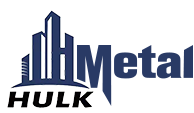
 Precast Concrete Accessories
Precast Concrete Accessories

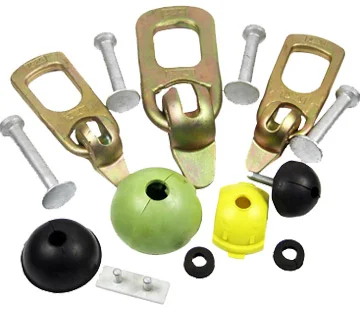
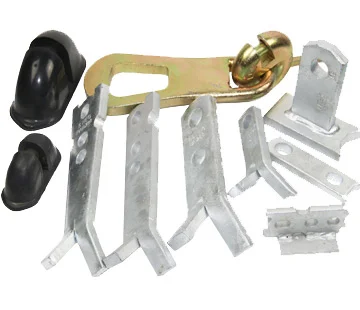

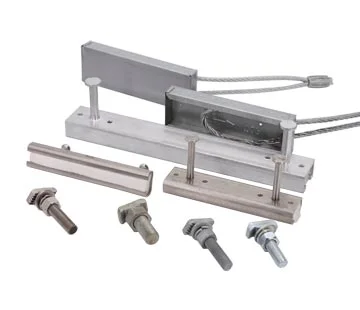

 Guardrail & Handrail Systems
Guardrail & Handrail Systems
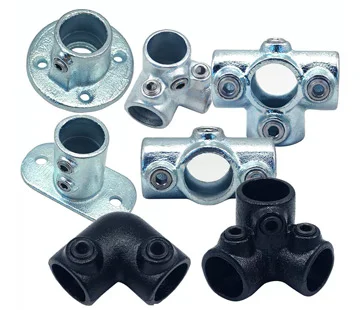

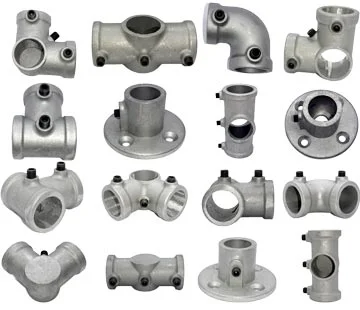
 Metal OEM Parts
Metal OEM Parts
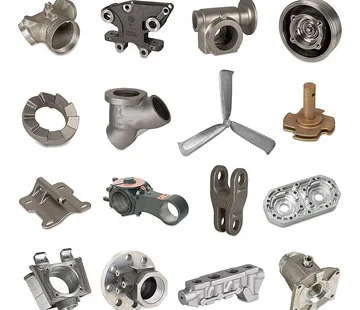
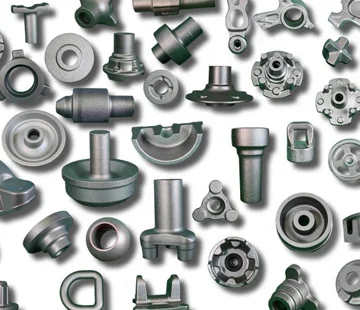
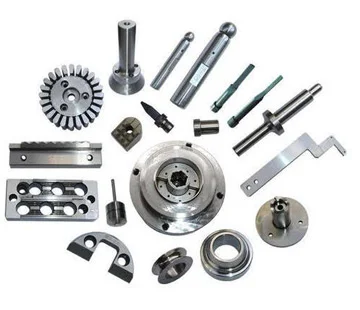
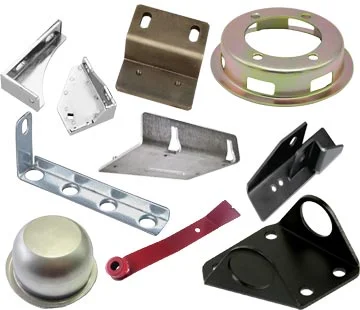
 Network Server Rack Accessories
Network Server Rack Accessories






 Wire Rope Cable Puller Griper
Wire Rope Cable Puller Griper
 Aluminum Parts
Aluminum Parts
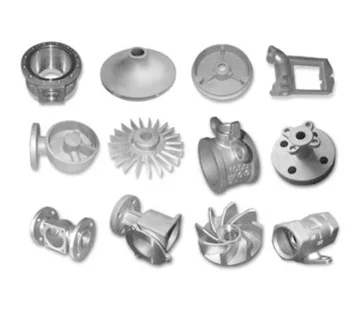
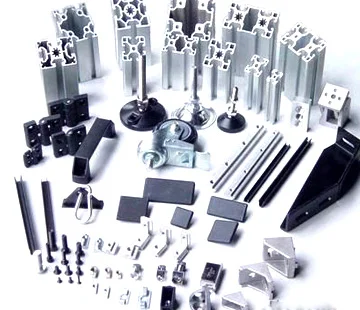
 Pump & Valve Parts
Pump & Valve Parts
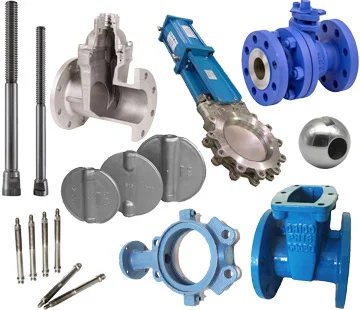
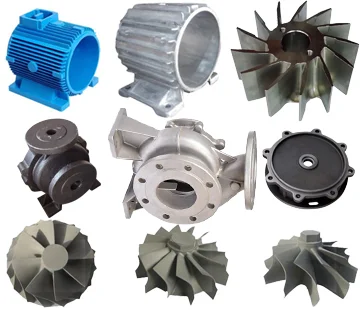









 Metal OEM Parts
Metal OEM Parts 



 Network Server Rack Accessories
Network Server Rack Accessories 





 Wire Rope Cable Puller Griper
Wire Rope Cable Puller Griper 





